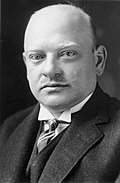
Back Парламенцкія выбары ў Германіі (1928) Byelorussian Německé volby do říšského sněmu 1928 Czech Valget i Tyskland 1928 Danish Reichstagswahl 1928 German Elecciones federales de Alemania de 1928 Spanish Saksan valtiopäivävaalit 1928 Finnish Élections législatives allemandes de 1928 French Pemilihan umum federal Jerman 1928 ID Elezioni parlamentari in Germania del 1928 Italian 1928年ドイツ国会選挙 Japanese
| |||||||||||||||||||||||||||||||||||||||||||||||||||||||||||||||||||||||||||||||||||||
All 491 seats in the Reichstag 246 seats needed for a majority | |||||||||||||||||||||||||||||||||||||||||||||||||||||||||||||||||||||||||||||||||||||
|---|---|---|---|---|---|---|---|---|---|---|---|---|---|---|---|---|---|---|---|---|---|---|---|---|---|---|---|---|---|---|---|---|---|---|---|---|---|---|---|---|---|---|---|---|---|---|---|---|---|---|---|---|---|---|---|---|---|---|---|---|---|---|---|---|---|---|---|---|---|---|---|---|---|---|---|---|---|---|---|---|---|---|---|---|---|
| Registered | 41,224,678 ( | ||||||||||||||||||||||||||||||||||||||||||||||||||||||||||||||||||||||||||||||||||||
| Turnout | 75.6% ( | ||||||||||||||||||||||||||||||||||||||||||||||||||||||||||||||||||||||||||||||||||||
| |||||||||||||||||||||||||||||||||||||||||||||||||||||||||||||||||||||||||||||||||||||
| |||||||||||||||||||||||||||||||||||||||||||||||||||||||||||||||||||||||||||||||||||||
| This article is part of a series on the |
| Politics of Germany |
|---|
 |
The 1928 German federal election was held on 20 May 1928 to elect the fourth Reichstag of the Weimar Republic.[1][2][3]
The previous three and a half years had seen Germany governed by a series of conservative cabinets, variably including the radical nationalist German National People's Party (DNVP). The fourth Marx cabinet collapsed in February 1928 due to a dispute over education policy, with new elections called for May. The results were a defeat for the parties of the centre-right cabinet: the DNVP particularly suffered, falling to 14%, as did the conservative German People's Party (DVP) and German Democratic Party (DDP). The Catholic Centre Party saw a substantial decline in its support for the first time since 1920. The winners of the election were the parties of the left: the Social Democratic Party, in opposition since 1923, won 30% of the vote. The Communist Party also improved to 10.6%. Much of the bourgeois and conservative electorate turned to small splinter parties representing special interests, including the Economic Party, Landvolk Party, and Revaluation Party.[3]
With a strong left-wing and the splintered right, there was little alternative to a government led by the SPD. Social Democrat Hermann Müller, who had previously served as Chancellor briefly in 1920, was charged with forming a new cabinet. The only viable majority was a Great Coalition stretching from the SPD to the DVP. Negotiations proved difficult: it took two weeks for the cabinet to be formed and sworn in, and only as a "cabinet of personalities" rather than a formal coalition, comprising ministers from the SPD, DVP, DDP, and Bavarian People's Party (BVP). The Centre sent only one minister, Theodor von Guérard, as a so-called "observer". It took until ten months later in April 1929 for a coalition agreement to be signed.[3]
This second Müller cabinet was to be the final democratic government of the Weimar Republic. Its fall in March 1930 and marked the end of the parliamentary system and the beginning of the presidential cabinets.[3]
- ^ Dieter Nohlen & Philip Stöver (2010) Elections in Europe: A data handbook, p762 ISBN 978-3-8329-5609-7
- ^ Pollock 1928.
- ^ a b c d Kolb, Eberhard (2004). The Weimar Republic. Translated by Falla, P. S.; Park, R. J. New York City: Routledge. p. 79-80. ISBN 0415344417.








